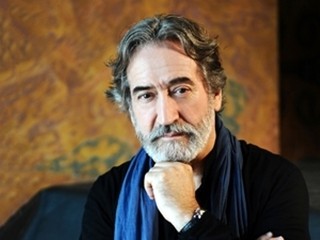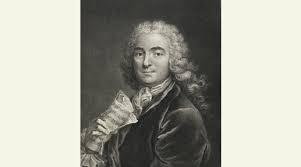|
Back
Music Most Intimate, Murder Most Foul New York
Zankel Hall, Carnegie Hall
04/16/2015 -
“Le Concert des Nations: Music for the French Bourbon Court”:
Anon: Concert for King Louis XIII in 1627 (selected by André Danican Philidor): “Les ombres” – “Air pour les mesmes” – “Les Nimphes de la Grenouillère” – “Les bergers” – “Les Amériquains”
Jean de Sainte-Colombe: Concert à deux violes égales
Jean-Baptiste Lully: Selections from Le Bourgeois Gentilhomme: “Marche pour la cérémonie des Turcs” – “Premier air des Espagnols” – “Deuxième air des Espagnols” – “Gavotte” – ”Canaries” – “Chaconne des scaramouches”
François Couperin: Deuxième concert royal: “Prélude” – Troisième concert royal: “Muzette” & “Chaconne légère”
Marin Marais: Sonnerie de Sainte-Geneviève du Mont-de-Paris
Jean Philippe Rameau: Pièces de clavecin en concert, Cinquième concert
Jean-Baptiste Forqueray/Antoine Forqueray: La du Vaucel – La Leclair
Jean-Marie Leclair: Sonata in D Major, Opus 2, No. 8
Jordi Savall (Director and Bass Viol), Marc Hantaï (Flute), Pierre Hantaï (Harpsichord), Manfredo Kraemer (Violin), Philippe Pierlot (Bass Viol)

J. Savall (© Courtesy of the Artist)
So how many nations were included in Jordi Savall’s 16th and 17th Century “Concert des Nations”? The five performers belonged to Catalonia, Belgium, France and Argentina. The musical countries included France and Italy, of course, but we also had revelations from Spain, the Canary Islands, Turkey and–250 years before Busoni and MacDowell–the Bourbon French version of American Indian music!!
Apparently, the Court of Louis XIII was honored by a tribe of baptized sauvage Américains, and their music was entertaining enough to the Dauphins, Dauphinesses and other personnages royaux, that court librarian André Danican Phildor arranged what he thought was “native music” for their amusement The fact that it was gently raucous, without even a scintilla of dissonance was only to be expected. French being French, it would never occur to them that even the most exotic visitors would use anything but the civilized scales of Couperin and Rameau.
In that same opening suite, a piece called Les Nimphes de la Grenouillere had the catchiest melody of the entire evening, part Irish jig, part Percy Grainger’s Country Gardens. This was so danceable that a far larger ensemble would have played it 1627,but the tune itself sufficed last night.
Quite unexpected was Jordi Savall’s ensemble. A quintet rather than his usual variegated ensemble. I have been an ardent fan of Mr. Savall for many years now. His scholarship, integrity and eclectic choices from Europe, the Middle East and forgotten centuries are without parallel. But with that come an excitement, a revelation that this music, when played as it was in olden times, has the innate personality to stimulate–whether the feet or the spirit.
The music played last night came from the courts of Louis XIII and Louis XIV. And if the Bourbon Court had nothing else, they had an abundance of instruments. Les Violons du Roy had a few dozen string players, while drummers, trumpeters and trombones were the rule for processions or ballets. Jordi Savall usually doesn’t stint at using these forces. The quintet he had last night might have done for the drawing room but were hardly sufficient for the grand celebration.
Like Richard Strauss’s Le Bourgeois Gentilhomme, Jean-Baptiste Lully’s music had originally been composed for a full orchestra, including all the drums for a Turkish pasquinade. Here those dances were truncated for five players. And while they were excellent, one doubts whether Louis XIV would have danced on stage, as he did for the original.
Still, for this chamber group, Mr. Savall chose only the best. Marc Hantaï played not only the 18th Century wooden horizontal flute with a woody alto range, but a piccolo-flute as well, over which he tootled some merry airs. Harpsichordist Pierre Hantaï did more than fill in, but played some beautiful solos. As for violinist Manfredo Kraemer, he did so much credit to that doomed master violinist, Jean-Marie Leclair.
We come finally to the two bass viols, better known as viols da gamba. They looked like cellos, they seemed to have the same range as cellos, and when Philippe Pierlot and Mr. Savall played them together in Jean de Sainte-Colombe’s 44th Concert for two equal-voiced viols, the colors were resonant and grand. To hear these two low-voiced instruments imitating the highest carillons of a church was truly a treat.
But that work was composed for two instruments, as were the other successful chamber works. I especially loved the bell-like chaconne by Marin Marais. The first time I heard Marais’ music was in the enchanting film, Tous les matins du monde–which was actually about the friendship between Marais and the aforesaid Jean de Sainte-Colombe. Hearing this chaconne, these elaborate variations over one line in the harpsichord, brought memories of the 18th Century bucolic France of the film. Yes, I should have listened to the music by itself, but Alain Corneau’s aural/visual twinning had been so gorgeous that it was impossible to separate the two.
While the concert had two parodies (Turkish and American Indian), it had one lovely homage for violin by Antoine Forqueray, this for Jean-Marie Leclair. And Leclair like Lully, was an irascible character and they both died agonizing, appropriately musical deaths. Lully was so angry as he beat time with his walking stick that he stabbed himself in the foot and died of gangrene. Leclair’s death was murder.

J.-M. Leclair (© archivesdefrance.culture.gouv.fr)
Madame Leclair, his estranged wife, was also his publisher, and a noted music engraver. She had helped her husband gain recognition, she engraved his music, and she had endless fights with him about money.
Apparently she visited him expecting an argument, and Leclair started to shout at her. By coincidence (!!!), she had brought to his house one of her engraving tools, a chisel. So in anger, she stabbed him with the chisel three times, and he died slowly as she calmly rearranged his room to make it seem like a foreign intruder had been there.
All right, so Mr. Savall was far too busy and serious in this concert to mention that murder most foul! Nor did the audience have any qualms or regrets about the delicacy of his arrangements. The almost full house applauded wildly, he gave two encores, and could have given far more.
Some of us, though, are suckers for drums, trumpets, horns and slick Versailles-style ceremonies. Jordi Savall offered something else, which was unintimidating, interesting and, hélas!, unremittingly intimate.
Harry Rolnick
|